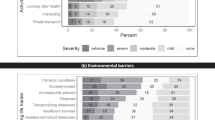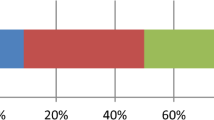Abstract
Study design:
Systematic literature review
Objective:
To review and assess the quality of available epidemiologic data of spinal cord injury (SCI) in Poland in the context of general International Classification of Functioning (ICF) domains and to answer the question whether there is a need for a comprehensive epidemiologic study of SCI in Poland.
Methods:
Databases Medline, Embase and Polish Medical Bibliography were searched using keywords ‘spinal cord injury’, ‘paraplegia’, ‘tetraplegia’ and ‘Poland’. Inclusion criteria: studies on humans, original papers, publication in 1979 or later. Case reports and studies with unclear inclusion criteria or performed on a population other than Polish were excluded. Full texts were reviewed for data on incidence, prevalence, etiology, mortality, natural history and outcome of comprehensive treatment. Quality of studies was assessed according to the modified Downs and Black criteria. The ICF model was applied to group the studies according to the ICF components.
Results:
Out of 536 identified papers, 224 articles were extracted and reviewed. Mean quality score was 11.04 points based on a 28-grade scale. Body functions and structures were assessed in 81.6%, activities in 22.4%, participation in 14.8%, environmental factors in 15.2% and personal factors in 47% of the studies reviewed.
Conclusion:
Current epidemiologic data on SCI in Poland are insufficient and biased toward biomedical aspects. There is a need to develop a long-term research strategy for SCI in Poland in the form of a comprehensive cohort study.
Similar content being viewed by others
Log in or create a free account to read this content
Gain free access to this article, as well as selected content from this journal and more on nature.com
or
References
World Health Organisation, World Bank. World Report on Disability. WHO: Geneva. 2011.
United Nations General Assembly. Convention on the rights of persons with disabilities, Resolution 61/106 2006.
Francis K . Physiology and management of bladder and bowel continence following spinal cord injury. Ostomy Wound Manage 2007; 53: 18–27.
DeForge D, Blackmer J, Garritty C, Yazdi F, Cronin V, Barrowman N et al. Male erectile dysfunction following spinal cord injury: a systematic review. Spinal Cord 2005; 44: 465–473.
Lombardi G, Del Popolo G, Macchiarella A, Mencarini M, Celso M . Sexual rehabilitation in women with spinal cord injury: A critical review of the literature. Spinal Cord 2010; 48: 842–849.
Krassioukov A . Autonomic function following cervical spinal cord injury. Respir Physiol Neurobiol 2009; 169: 157–164.
Bauman WA, Spungen AM . Metabolic changes in persons after spinal cord injury. Phys Med Rehabil Clin N Am 2000; 11: 109–140.
Yilmaz B, Yasar E, Goktepe AS, Onder ME, Alaca R, Yazicioglu K et al. The relationship between basal metabolic rate and femur bone mineral density in men with traumatic spinal cord injury. Arch Phys Med Rehabil 2007; 88: 758–761.
Gelis A, Dupeyron A, Legros P, Benaïm C, Pelissier J, Fattal C . Pressure ulcer risk factors in persons with SCI: Part I: Acute and rehabilitation stages. Spinal Cord 2009; 47: 99–107.
Gelis A, Dupeyron A, Legros P, Benaïm C, Pelissier J, Fattal C . Pressure ulcer risk factors in persons with spinal cord injury. Part 2: The chronic stage. Spinal Cord 2009; 47: 651–661.
Wahman K, Nash MS, Westgren N, Lewis JE, Seiger A, Levi R . Cardiovascular disease risk factors in persons with paraplegia: The Stockholm spinal cord injury study. J Rehabil Med 2010; 42: 272–278.
Siddall PJ, Finnerup NB. . Pain following spinal cord injury. In: Handbook of Clinical Neurology (eds Vinken PJ and Bruyn GW) (Elsevier/North-Holland Biomedical Press: Amsterdam, 2006), pp 689–703.
Adams MM, Hicks AL . Spasticity after spinal cord injury. Spinal Cord 2005; 43: 577–586.
Lidal IB, Veenstra M, Hjeltnes N, Biering-Sørensen F . Health related quality of life in persons with long-standing spinal cord injury. Spinal Cord 2008; 46: 710–715.
Liu CW, Huang CC, Yang YH, Chen SC, Weng MC, Huang MH . Relationship between neurogenic bowel dysfunction and health related quality of life in persons with spinal cord injury. J Rehabil Med 2009; 41: 35–40.
Craig A, Tran Y, Middleton J . Psychological morbidity and spinal cord injury: A systematic review. Spinal Cord 2009; 47: 108–114.
New PW, Jackson T . The costs and adverse events associated with hospitalization of patients with spinal cord injury in Victoria, Australia. Spine 2010; 35: 796–802.
Krause JS, Carter RE . Risk of mortality after spinal cord injury: relationship with social support, education, and income. Spinal Cord 2009; 47: 592–596.
Munce SE, Wodchis WP, Guilcher SJ, Couris CM, Verrier M, Fung K et al. Direct costs of adult traumatic spinal cord injury in Ontario. Spinal Cord 2013; 5: 64–69.
French DD, Campbell RR, Sabharwal S, Nelson AL, Palacios PA, Gavin-Dreschnack D . Health care costs for patients with chronic spinal cord injury in the Veterans Health Administration. J Spinal Cord Med 2007; 30: 477–481.
Donovan HW . Spinal cord injury — past, present, and future. J Spinal Cord Med 2007; 30: 85–100.
Ullrich PM, Spungen AM, Atkinson D, Bombardier C H, Chen Y, Erosa NA et al. Activity and participation after spinal cord injury: State-of-the-art report. J Rehabil Res Dev 2012; 49: 155–174.
Kiwerski J . The causes, sequele and attempts at prevention of cervical spine injuries in Poland. Paraplegia 1993; 31: 527–533.
SPZOZ Repty Gornoslaskie Centrum Rehabilitacji (Accessed 19 September). Available from http://www.repty.pl/historia_gcr_repty,1.
Palak Z, Bartkowicz Z . Wsparcie społeczne w rehabilitacji i resocjalizacji, (eds UMCS: Lublin, 2007).
Foundation for Active Rehabilitation (Accessed 14 September 2012). Available from http://www.far.org.pl/select-your-language/english.html.
Post MWM, Brinkhof MWG, von Elm E, Boldt C, Brach M, Fekete C et alfor the SwiSCI study group. Design of the Swiss Spinal Cord Injury Cohort Study. Am J Phys Med Rehabil 2011; 90 (11 Suppl 2): S5–S16.
Downs SH, Black N . The feasibility of creating a checklist for the assessment of the methodological quality both of randomised and non-randomised studies of health care interventions. J Epidemiol Community Health 1998; 52: 377–384.
Quality Assessment Tool and Data Extraction. (Accessed 31 October 2012). Available from http://www.scireproject.com/about-scire/methods-of-systematic-review/article-assessment/quality-assessment-tool-and-data-extract.
World Health Organisation. International Classification of Functioning, Disability and Health: ICF. WHO: Geneva. 2001.
Pietraszkiewicz F, Tysiewicz-Dudek M . Epidemiology of spinal injuries in Lubuskie province in Poland. Ortop Traumatol Rehabil 2010; 12: 435–442.
Haftek I, Garlicki J, Tomczak M, Brzezińska B, Kowalczyk P . Epidemiologia urazów kręgosłupa i rdzenia kręgowego. Doniesienie wstępne. Kwart Ortop 2000 (Suppl) 11–18.
Kiwerski J, Ahmad SH . Paraplegia in women. Paraplegia 1983; 21: 161–165.
Kiwerski JE . Comparison of epidemiology, methods and results of treatment in cervical spinal injuries over the last 20 years in Poland. Eur Spine J 1993; 2: 165–168.
Kiwerski J . The influence of the mechanism of cervical spine injury on the degree of the spinal cord lesion. Paraplegia 1991; 29: 531–536.
Kiwerski JE . Injuries to the spinal cord in elderly patients. Injury 1992; 23: 397–400.
Kiwerski J . Neurological improvement in traumatic injuries of the cervical spinal cord. Paraplegia 1981; 19: 31–37.
Kiwerski JE . Factors contributing to the increased threat to life following spinal cord injury. Paraplegia 1993; 31: 793–799.
Kiwerski J . Marked neurological improvement in patients after spinal cord injury in the cervical part hospitalized with tetraplegia. Chir Narz Ruchu 1983; 48: 263–268.
Tederko P, Czech J, Kiwerski J, Lauge I, Krasuski M . International Standards for Neurological Classification of Spinal Cord Injury in clinical practice - analysis of repeatability. Fizjoter Pol 2010; 3: 193–201.
Stover SL, DeVivo MJ, Go BK . History, implementation, and current status of the National Spinal Cord Injury Database. Arch Phys Med Rehabil 1999; 80: 1365–1371.
Curt A, Schwab ME, Dietz V . Providing the clinical basis for new interventional therapies: Refined diagnosis and assessment of recovery after spinal cord injury. Spinal Cord 2004; 42: 1–6.
de Groot S, Dallmeijer AJ, Post MW, van Asbeck FW, Nene AV, Angenot EL et al. Demographics of the Dutch multicenter prospective cohort study ‘Restoration of mobility in spinal cord injury rehabilitation. Spinal Cord 2006; 44: 668–675.
O’Connor PJ . Trends in spinal cord injury. Accid Anal Prev 2006; 38: 71–77.
Eriks-Hoogland I, Cieza A, Post M, Hilfiker R, van Hedel H, Cripps R et al. Category specification and measurement instruments in large spinal cord injury studies: a comparison using the International Classification of Functioning, Disability, and Health as a reference. Am J Phys Med Rehabil 2011; 90 (11 Suppl 2): S39–S49.
Acknowledgements
We are grateful to Professor Gerold Stucki, Dr Martin Brinkhof and Dr Jan Reinhardt of the Swiss Paraplegic Research in Nottwil, Switzerland, Professor Jerzy Kiwerski from STOCER and Dr Wieslaw Rycerski from Upper Silesian Rehabilitation Centre Repty for their invaluable comments.
Author information
Authors and Affiliations
Corresponding author
Ethics declarations
Competing interests
The authors declare no conflict of interest.
Additional information
Supplementary Information accompanies this paper on the Spinal Cord website
Supplementary information
Rights and permissions
About this article
Cite this article
Tederko, P., Krasuski, M., Ptyushkin, P. et al. Need for a comprehensive epidemiologic study of spinal cord injury in Poland: findings from a systematic review. Spinal Cord 51, 802–808 (2013). https://doi.org/10.1038/sc.2013.105
Received:
Revised:
Accepted:
Published:
Issue date:
DOI: https://doi.org/10.1038/sc.2013.105
Keywords
This article is cited by
-
Neuroprotective effect of geraniol on neurological disorders: a review article
Molecular Biology Reports (2022)



